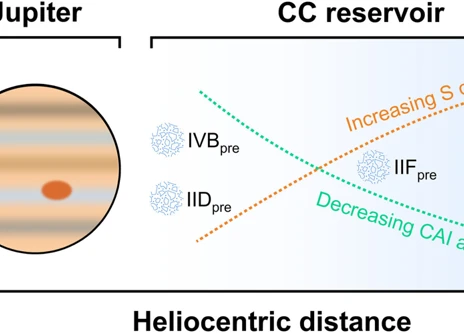What secrets can asteroids hold about the early solar system? These celestial bodies, which are composed of a variety of unique materials, provide fascinating clues to the origins and evolution of our cosmic neighborhood. By examining the composition of asteroids, scientists can uncover valuable information about the chemical makeup of our early solar system and gain insights into the processes that shaped it. In this article, we will delve into the world of asteroids and explore the significance of studying their composition. Let’s embark on a cosmic journey as we unravel the mysteries of asteroid composition and its implications for our understanding of the universe.
Contents
- 1. What are Asteroids?
- 2. Importance of Studying Asteroid Composition
- 3. Factors Affecting Asteroid Composition
- 4. Methods of Determining Asteroid Composition
- 5. Key Asteroid Compositions and Their Significance
- Understanding the Early Solar System
- How Asteroid Composition Provides Insights
- Analyzing Asteroid Compositions
- The Future of Asteroid Composition Research
- Conclusion
-
Frequently Asked Questions
- 1. How do asteroids differ from comets?
- 2. Can asteroids collide with Earth?
- 3. How are asteroid compositions determined?
- 4. What can asteroid compositions tell us about the early solar system?
- 5. How are asteroids formed?
- 6. Do asteroids have different shapes?
- 7. What makes studying asteroid composition important?
- 8. Can asteroid composition help us understand the origins of meteorites?
- 9. How do scientists track asteroids?
- 10. Are asteroids a threat to Earth?
- References
-
Frequently Asked Questions
- 1. How big are asteroids?
- 2. What are the most common types of asteroids?
- 3. Do asteroids contain water?
- 4. How do scientists determine the composition of asteroids?
- 5. Are all asteroids made of rock and metal?
- 6. Can studying asteroid composition help us understand the origins of life?
- 7. What role do asteroids play in planetary defense?
- 8. How are asteroid compositions related to meteorites?
- 9. Can the composition of asteroids change over time?
- 10. What advancements in technology have allowed us to study asteroid composition more effectively?
- References
- Read More
1. What are Asteroids?
Asteroids are rocky remnants left over from the early stages of our solar system’s formation. These small celestial bodies, which are primarily found in the asteroid belt between Mars and Jupiter, come in a variety of shapes and sizes. Some can be as small as boulders, while others can be hundreds of kilometers in diameter. They are composed of a mixture of different materials, such as rock, metal, and sometimes even ice. In fact, some asteroids are considered “rubble piles,” consisting of various fragments held together by gravity. The study of asteroids provides valuable insights into the conditions and building blocks that existed during the formation of our solar system. By analyzing their composition, scientists can gain a deeper understanding of the early chemical makeup of our cosmic neighborhood, the processes involved in planetary formation, and potentially even the origins of life. Asteroids also play a crucial role in the formation of meteor showers, another fascinating cosmic phenomenon. (source: unveiling meteor showers’ origins) The study of asteroids continues to captivate researchers and pave the way for new discoveries in our quest to unravel the mysteries of the universe.
2. Importance of Studying Asteroid Composition
Studying the composition of asteroids is of paramount importance in enhancing our understanding of the early solar system and the processes that led to the formation of planets. Here are several key reasons why the study of asteroid composition is significant:
1. Origin of Planetary Building Blocks: Asteroids are believed to be remnants of the early stages of planet formation. By analyzing their composition, scientists can gain valuable insights into the building blocks that formed the planets in our solar system. This knowledge helps us piece together the puzzle of how rocky planets like Earth, Mars, and Venus came into existence.
2. Evolution of the Solar System: The composition of asteroids provides information about the conditions and processes that prevailed during the early stages of the solar system’s evolution. By studying the distribution and variety of elements within asteroids, scientists can unravel the chemical history of our cosmic neighborhood. This knowledge aids in understanding the complex interplay between different celestial bodies and how they have influenced each other’s development.
3. Meteorite Origins: Meteorites, which are remnants of asteroids that have fallen to Earth, carry valuable information about the composition and history of the parent asteroids. By studying meteorites, scientists can indirectly study the composition of asteroids and gain insights into the early solar system’s dynamics. This research helps answer questions about the formation and evolution processes of asteroids and their role in the formation of our solar system.
4. Implications for Life: Studying the composition of asteroids can provide insights into the delivery of organic compounds and water to the early Earth. Some asteroids contain organic molecules and volatiles, which are essential building blocks for life as we know it. By understanding the composition of asteroids, scientists can further explore the potential for life to originate or exist elsewhere in the universe. This research has far-reaching implications for astrobiology and our understanding of extraterrestrial life.
Through the study of asteroid composition, scientists gain a deeper understanding of the intricacies of the early solar system and the conditions that shaped our cosmic neighborhood. This knowledge continues to expand as researchers explore new methods and technologies to unravel the mysteries of the universe. (source: how meteor showers were formed and observed)
3. Factors Affecting Asteroid Composition
The composition of asteroids is influenced by several factors that have shaped these celestial bodies throughout their existence. One significant factor is the distance from the Sun. Asteroids that are closer to the Sun, known as S-type asteroids, tend to be composed primarily of silicate minerals, like olivine and pyroxene. These silicate-rich asteroids are thought to have formed closer to the Sun where higher temperatures prevented the condensation of volatile compounds.
On the other hand, C-type asteroids, which are found in the outer regions of the asteroid belt, are composed of carbonaceous materials. These asteroids contain a higher percentage of volatile elements, such as carbon, hydrogen, and nitrogen. Their composition suggests that they formed in colder regions where these volatile materials could condense and accumulate.
Another factor that affects asteroid composition is the process of differentiation. Some asteroids, known as M-type asteroids, are metallic in nature and are believed to have originated from the cores of once larger, differentiated bodies. These metallic asteroids likely formed through processes such as collisions and the subsequent stripping away of outer layers, leaving behind the dense metallic core.
Additionally, asteroid composition can be influenced by collisions with other bodies in space. These impact events can cause asteroids to undergo significant changes in their composition. For example, a collision can cause the mixing of different materials, resulting in asteroids with a more varied composition.
It’s important to note that the composition of asteroids can also vary within the same asteroid family or even within a single asteroid itself. These variations can be caused by factors such as internal heating, which can result in the alteration of minerals and the formation of secondary minerals.
Understanding the factors that affect asteroid composition allows scientists to piece together the puzzle of the early solar system and gain insights into the processes that led to the formation and evolution of these fascinating celestial bodies. (source: dynamic fire and air astro compatibility)
4. Methods of Determining Asteroid Composition
Determining the composition of asteroids is a complex task that requires innovative approaches and advanced technologies. Scientists employ several methods to study the composition of these celestial bodies. One of the primary techniques used is spectroscopy, which involves analyzing the light reflected or emitted by asteroids. By examining the different wavelengths of light absorbed or reflected, scientists can identify the presence of specific elements and compounds in the asteroid’s composition. Spectroscopy provides valuable information about the mineralogy and chemical makeup of asteroids. Another method used is radar imaging, which involves bouncing radio waves off the surface of asteroids and analyzing the echoes that return. This technique allows scientists to study the shape, size, and even the surface roughness of asteroids, providing indirect clues about their composition. Additionally, sample return missions have revolutionized our understanding of asteroid composition. Spacecraft like NASA’s OSIRIS-REx and JAXA’s Hayabusa2 have successfully collected samples from asteroids and returned them to Earth for detailed analysis. These mission samples provide direct evidence of the asteroid’s composition, allowing scientists to study the materials up close and gain valuable insights into the early solar system’s chemistry and evolution. Each of these methods complements the others, providing a comprehensive understanding of asteroid composition and its significance in unraveling the mysteries of the early solar system.
5. Key Asteroid Compositions and Their Significance
Understanding the composition of asteroids is crucial in unraveling the mysteries of the early solar system. Different types of asteroids have distinct compositions, each with its own significance. Here are some key asteroid compositions and their importance:
1. Carbonaceous (C-type) Asteroids: These asteroids are rich in carbon compounds, including organic molecules and water ice. They are considered to be the most primitive and contain materials similar to those found in the outer regions of the solar system. Studying C-type asteroids can provide insights into the early chemical composition of the solar system, as well as the building blocks of life.
2. Silicate (S-type) Asteroids: These asteroids are composed predominantly of silicate minerals, such as olivine and pyroxene. S-type asteroids are thought to originate from the inner regions of the solar system, closer to the Sun. By studying their composition, scientists can gain insights into the differentiation of rocky materials in the early solar system and the processes that occurred during the formation of terrestrial planets.
3. Metal-rich (M-type) Asteroids: These asteroids are primarily composed of nickel-iron metal. They are believed to be the remnants of the cores of differentiated bodies that were disrupted through collisions. M-type asteroids are valuable because they provide information about the metallic cores of planetesimals that existed during the early stages of planetary formation.
4. Trojan Asteroids: These asteroids share the same orbit as a planet, either leading or trailing the planet by approximately 60 degrees. Trojan asteroids are typically composed of a mix of different materials, including rocky and icy components. Studying these asteroids can provide insights into the formation and evolution of planets, as well as the dynamical history of the solar system.
By analyzing the compositions of these different types of asteroids, scientists can uncover various aspects of the early solar system. These findings help to refine our understanding of planetary formation and provide clues about the conditions that existed billions of years ago.
Understanding the Early Solar System
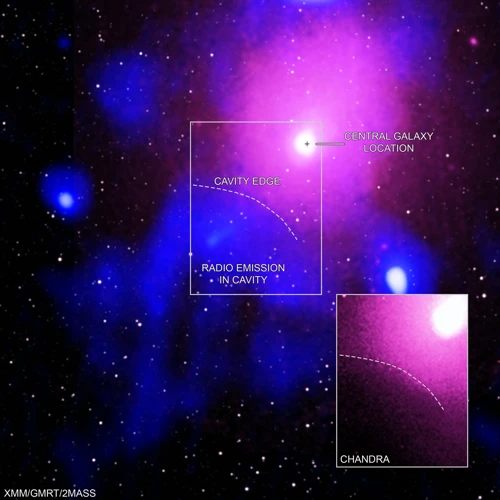
Understanding the early solar system is crucial for unraveling the mysteries of our cosmic origins. The formation of our solar system began approximately 4.6 billion years ago from a swirling cloud of gas and dust known as the solar nebula. Within this nebula, gravity caused the material to slowly come together, forming a central protostar, which eventually became our Sun. As the protoplanetary disk surrounding the young Sun cooled down, tiny dust particles started to collide and accumulate, gradually forming larger bodies called planetesimals. These planetesimals played a crucial role in the early solar system’s evolution and served as building blocks for planets and other celestial bodies. One significant contributor to this process was the presence of asteroids. (source: how meteor showers formed and observed) By studying asteroids and their composition, scientists can gain insights into the conditions, materials, and processes that existed during the early stages of planet formation. Asteroids act as time capsules, harboring valuable information about the early chemical composition of our solar system. These celestial bodies provide an opportunity to piece together the puzzle of our cosmic history and better understand how our home, planet Earth, came into existence. Through the exploration of asteroids, scientists continually expand our knowledge of the universe and shed light on the awe-inspiring story of the early solar system.
6. The Formation of the Solar System
The formation of the solar system is a fascinating story that provides crucial context for understanding asteroids and their composition. According to the widely accepted nebular hypothesis, the solar system originated from a massive cloud of gas and dust known as the solar nebula. About 4.6 billion years ago, a disturbance, such as a nearby supernova explosion or the shockwave from a passing star, caused the nebula to contract and eventually form a spinning disk.
Within this disk, known as the protoplanetary disk, the majority of materials gravitated toward the center, forming the Sun. The remaining gas and dust particles began to collide and stick together, forming small bodies called planetesimals. These planetesimals then continued to collide and grow, eventually forming the planets, moons, and asteroids in the solar system.
Asteroids are a direct result of this process, representing fragments and remnants from the early stages of planetary formation. By studying asteroid composition, scientists can gain insights into the materials that were present during this formative period. The composition of asteroids can vary greatly depending on their location in the solar system and their formation history. They can consist of rocky materials, metal, water ice, and even organic compounds. These diverse compositions provide valuable information about the conditions and chemical environment of the early solar system.
Understanding the formation of the solar system is essential for deciphering the clues that asteroids hold about our cosmic origins. By examining their composition, scientists can piece together the complex puzzle of how our solar system came to be, shedding light on the processes that shaped Earth and other celestial bodies. It is through the study of asteroids that we can gain a deeper appreciation for the intricate dance of cosmic forces that brought us to where we are today.
7. Role of Asteroids in Studying the Early Solar System
Asteroids play a crucial role in studying the early solar system and providing valuable insights into its formation and evolution. Here are some key reasons why asteroids are instrumental in our quest for understanding:
1. Building Blocks of Planets: By studying asteroids, scientists can examine the original building blocks from which planets formed. These rocky bodies are remnants of the protoplanetary disk that surrounded our young Sun billions of years ago. Their compositions shed light on the materials present during the early stages of planet formation.
2. Preserved Records: Unlike larger celestial bodies like planets, asteroids have undergone minimal geological changes since their formation. This means that their compositions can serve as valuable records of the conditions that existed in the early solar system. By analyzing asteroid composition, scientists can gain insights into the elemental abundances, isotopic ratios, and organic compounds that were present in the early days of our cosmic neighborhood.
3. Time Capsules: Asteroids provide a glimpse into the early history of our solar system, acting as time capsules that preserve rare materials and volatile compounds. These materials can include precious metals, water, and even organic molecules, which are essential for understanding the potential for life elsewhere in the universe.
4. Planetary Migration: The study of asteroids can also shed light on the process of planetary migration. It is believed that early in the solar system’s history, the giant planets like Jupiter and Saturn migrated from their original positions. These gravitational interactions with the gas and dust in the protoplanetary disk could have significantly influenced the distribution and composition of asteroids.
5. Impact History: Asteroids are remnants of the intense bombardment period known as the Late Heavy Bombardment, which occurred approximately 4 billion years ago. By studying asteroid impacts on the Moon, planets, and other asteroids, scientists can reconstruct the history of these collisions and gain insights into the overall dynamics of the early solar system.
The study of asteroids provides a unique window into the early solar system. These celestial bodies hold valuable clues about the formation of planets, the distribution of materials, and the dynamics of the early cosmic neighborhood. By analyzing their composition and impact history, scientists can unravel the mysteries of our origins and gain a deeper understanding of the universe we inhabit.
How Asteroid Composition Provides Insights
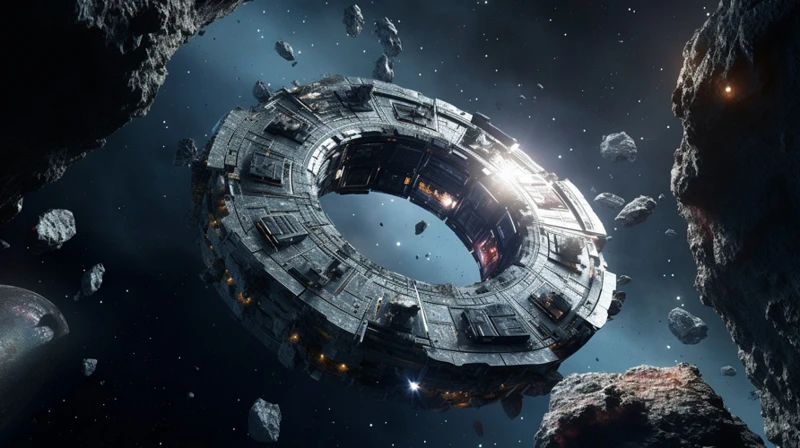
Understanding the composition of asteroids provides invaluable insights into various aspects of the early solar system and beyond. Here are some of the key ways in which asteroid composition provides us with crucial information:
1. Clues to the Early Chemical Composition: Asteroids’ composition can help us understand the chemical elements that were present in the early solar system. By analyzing the types and ratios of different elements found in asteroids, scientists can gain insights into the initial abundances of elements in the protoplanetary disk, which ultimately led to the formation of planets.
2. Tracing the Evolution of the Solar System: Asteroids provide us with a snapshot of the solar system’s evolution. Different asteroids have distinct compositions that reflect the specific conditions and processes they experienced during their formation. By studying these compositions, scientists can track changes in the solar system over time, including the formation of planets and the migration of celestial bodies.
3. Determining Meteorite Origins: Meteorites are rocks that fall to Earth from space, often originating from asteroids. By comparing the composition of meteorites with that of known asteroids, scientists can identify the source of these meteorites. This allows them to determine the types of asteroids that have impacted our planet, providing insights into the dynamics of our solar system and the potential hazards it may pose.
4. Probing Planetary Building Blocks: Asteroids are considered remnants of the building blocks that formed planets. By analyzing their composition, scientists can gain a better understanding of the materials from which planets formed. This knowledge helps to refine our models of planet formation and provides insights into the processes and conditions that were critical in shaping our solar system.
5. Investigating Volatile Elements and Water: Some asteroids contain volatile elements and even water ice. The study of these volatile-rich asteroids can shed light on the origins and distribution of water in the early solar system. Additionally, water-rich asteroids have been identified as potential resource targets for future space exploration and colonization efforts.
By unraveling the mysteries of asteroid composition, scientists can further our understanding of the early solar system, the formation of planets, and the potential for life beyond Earth. These insights have far-reaching implications for our knowledge of the universe and our place within it.
8. Clues to the Early Chemical Composition
The composition of asteroids can provide valuable clues about the early chemical composition of our solar system. By studying the elements and compounds present in these celestial bodies, scientists can gain insights into the building blocks that were present during the formation of planets and other celestial objects.
Here are some key ways in which asteroid composition offers clues to the early chemical composition:
1. Elemental Abundances: By analyzing the abundances of different elements in asteroids, scientists can determine the relative ratios of these elements present in the early solar system. This information helps build a picture of the chemical environment in which planets formed.
2. Isotopic Ratios: Isotopes are variants of an element with different numbers of neutrons. The isotopic ratios of certain elements in asteroids can provide valuable information about the processes that occurred during the early solar system. For example, isotopic ratios of oxygen have helped scientists understand the role of different types of meteorites in the formation of the Earth’s oceans.
3. Organic Compounds: Some asteroids contain organic compounds, which are the building blocks of life. The detection of amino acids and other complex organic molecules in asteroids suggests that these compounds could have been delivered to Earth early in its history, potentially seeding the planet with the necessary ingredients for life.
4. Volatile Elements: The presence or absence of volatile elements, such as water, carbon, and nitrogen, in asteroids can shed light on the conditions during the formation of the solar system. For example, the detection of water ice in some asteroids suggests that these bodies may have originated from regions far from the Sun where water could exist as ice.
By studying the chemical composition of asteroids, scientists can piece together the puzzle of how our solar system came into existence and how the planets, including Earth, formed and evolved. This understanding has profound implications for our broader understanding of the universe and our place within it.
9. Tracing the Evolution of the Solar System
Tracing the evolution of the solar system is a significant endeavor, and asteroids play a crucial role in this process. These celestial bodies provide valuable insights into the early stages of planetary formation and the dynamic processes that shaped our solar system. By studying the composition of asteroids, scientists can analyze the different elements and isotopes present, which can act as time capsules from the early solar system. For example, the presence of certain isotopes like aluminum-26 can indicate the occurrence of explosive events like supernovae that may have influenced the formation of our solar system. Additionally, the ratio of different isotopes, such as oxygen-16 and oxygen-17, can provide clues about the origins and evolution of water in the solar system. By examining asteroid compositions and comparing them to meteorite samples found on Earth, scientists can gain a better understanding of the processes that occurred during the formation and evolution of planets, including our own. This information can help unlock the mysteries of our cosmic origins and shed light on the conditions that led to the development of life on Earth. The study of asteroid composition, therefore, plays a vital role in tracing the fascinating evolution of our solar system.
10. Determining Meteorite Origins
Determining the origins of meteorites is a crucial aspect of asteroid composition research. Meteorites are fragments of asteroids or other celestial bodies that have survived the journey through Earth’s atmosphere and landed on the surface. They provide valuable insights into the composition and history of their parent bodies. Scientists use various methods to study meteorites and determine their origins:
1. Chemical Composition Analysis: One way to determine meteorite origins is by analyzing their chemical composition. By comparing the elemental abundances and isotopic ratios of meteorites with known samples from asteroids and other celestial bodies, scientists can identify potential parent bodies. These analyses can reveal information about the processes that occurred during the formation and differentiation of these bodies.
2. Spectral Analysis: Spectroscopy, a technique often used in asteroid composition studies, is also applied to meteorites. By analyzing the reflected light from meteorites across different wavelengths, scientists can identify characteristic absorption bands that correspond to specific minerals or compounds. These spectral fingerprints can help determine the parent body’s composition and provide insights into its geological history.
3. Age Dating: Another method for determining meteorite origins is through age dating. By measuring the abundance of certain isotopes within meteorites, scientists can estimate the age of the parent body and its formation processes. For example, radiometric dating techniques can be used to determine the age of the minerals within a meteorite and provide clues about its history.
4. Petrographic Examination: Petrography involves the study of meteorite thin sections under a microscope. This technique allows scientists to observe the texture, mineralogy, and structural features of the meteorite. By comparing these characteristics with known samples, researchers can make inferences about the parent body’s geological processes and potential origins.
5. Impact Modeling: Impact events on asteroids can cause fragments to be ejected into space and eventually reach Earth as meteorites. Scientists can simulate these impact events and model the trajectory of ejected fragments to determine the possible source regions on the parent body’s surface.
By combining these methods and analyzing a wide range of meteorites, scientists can piece together the puzzle of their origins and gain insights into the diverse compositions and histories of asteroids and other celestial bodies. Understanding meteorite origins not only contributes to our knowledge of the early solar system but also provides crucial information for studying the formation and evolution of planets and other astronomical objects.
Analyzing Asteroid Compositions
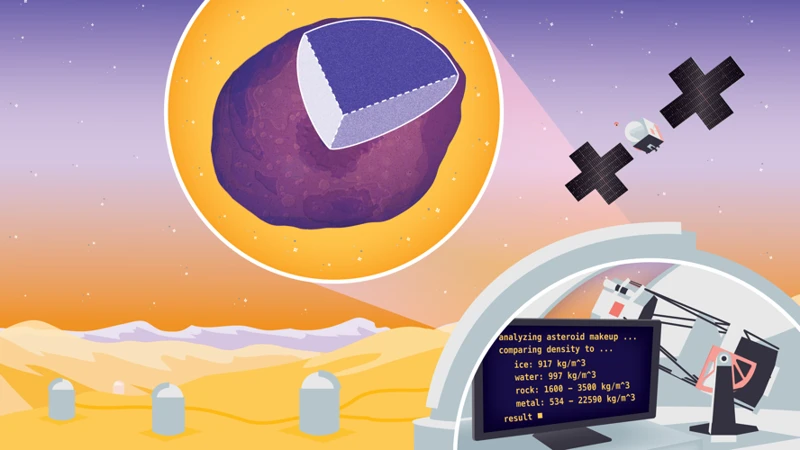
Analyzing asteroid compositions is a complex and intricate process that involves a variety of scientific techniques and methodologies. Scientists employ a range of tools and instruments to study the composition of asteroids, providing valuable insights into their internal structure and chemical makeup. Here are some key methods used for analyzing asteroid compositions:
1. Spectroscopy: Revealing Elemental Composition
Spectroscopy is a powerful technique used to study the interaction of light with matter. By analyzing the light reflected or emitted by asteroids, scientists can determine their elemental composition. Spectroscopic observations provide information about the presence of various elements and minerals, such as iron, nickel, silicates, and carbon compounds. This helps scientists infer the asteroid’s origin and understand the geological processes that occurred within it.
11. Spectroscopy: Revealing Elemental Composition
Spectroscopy is a powerful tool used by scientists to analyze the composition of asteroids and reveal their elemental makeup. This technique involves studying the interaction of electromagnetic radiation with matter, providing valuable information about the specific elements present in an asteroid. By examining the light emitted or absorbed by the asteroid at various wavelengths, astronomers can identify the unique spectral signatures associated with different elements. Each element has a distinctive pattern of absorption or emission lines that can be detected and analyzed. Spectroscopy allows researchers to determine the abundance of elements such as iron, magnesium, silicon, and carbon in an asteroid. By studying the spectral features in the infrared region, scientists can detect the presence of minerals and compounds, including water and organic molecules, which provide insights into the potential for habitability and the origins of life. Spectroscopic data obtained from ground-based observatories and space missions, such as NASA’s Dawn mission and the Japanese spacecraft Hayabusa2, have significantly contributed to our understanding of asteroid composition. This information helps scientists piece together the puzzle of the early solar system and sheds light on the processes that were at play during its formation and evolution. (source: NASA’s NASA Briefing Discusses Asteroid Bennu Sample Return)
12. Probing Internal Structure through Radar Imaging
Probing the internal structure of asteroids through radar imaging is a fascinating technique that allows scientists to gain insights into the composition and physical properties of these celestial bodies. Radar imaging involves bouncing radio waves off the surface of an asteroid and analyzing the reflected signals. This method provides valuable information about the asteroid’s shape, size, rotation, and surface features. By studying the echoes of the radar signals, scientists can also determine the internal structure of the asteroid, including the presence of underground cavities or layers of different materials. This technique has been instrumental in determining the densities of several asteroids, which in turn provides clues about their internal composition. For example, radar observations of the near-Earth asteroid (66391) 1999 KW4 revealed that it consists of two lobes held together by gravity. These lobes have different densities, suggesting that the internal composition of the asteroid is heterogeneous. Radar imaging has also been used to identify potential landing sites for future asteroid exploration missions, as it can provide valuable information about the surface roughness and composition of the asteroid. By utilizing this powerful technique, scientists are unraveling the mysteries of asteroid internal structures and gaining a deeper understanding of their formation and evolution.
13. Sample Return Missions: Unraveling the Past
Sample return missions are an exciting and groundbreaking method used to study asteroid composition and unravel the mysteries of the past. These missions involve sending spacecraft to rendezvous with an asteroid, collect samples from its surface, and bring them back to Earth for detailed analysis. By studying these pristine samples in laboratory settings, scientists can gain valuable insights into the early solar system and the processes that shaped it. The samples obtained from asteroids can provide information about the composition of these celestial bodies, such as the presence of minerals, organic compounds, and even water. This can help scientists understand the conditions and building blocks that existed during the formation of the solar system. One notable example is the Hayabusa mission conducted by the Japan Aerospace Exploration Agency (JAXA), which successfully returned samples from the asteroid Itokawa in 2010. The analysis of these samples revealed the presence of organic compounds and provided valuable information about the asteroid’s history and formation processes. The ongoing OSIRIS-REx mission by NASA, which aims to collect samples from the asteroid Bennu and return them to Earth, is another exciting endeavor in the field of sample return missions. By analyzing the composition of these asteroid samples, scientists can further our understanding of the early solar system, the origins of life, and the potential resources that asteroids may offer for future space exploration endeavors. Sample return missions are truly incredible journeys that allow us to delve into the past and unlock the secrets of our cosmic origins.
The Future of Asteroid Composition Research
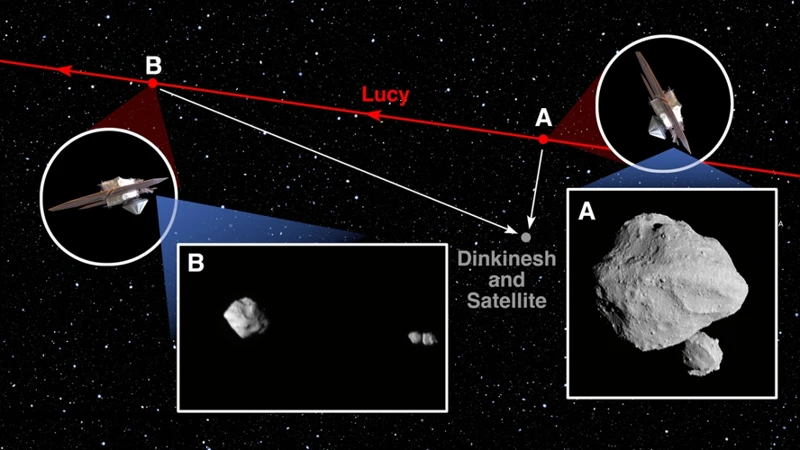
The field of asteroid composition research is constantly evolving, driven by advancements in technology and our insatiable quest for knowledge about the early solar system. As our understanding deepens, so does our ability to uncover the secrets held within these celestial bodies. One area of ongoing development is the improvement of remote sensing techniques, such as spectroscopy and radar imaging. These methods allow scientists to analyze the composition and internal structure of asteroids from afar, providing valuable insights without the need for physical contact. The growing interest in sample return missions holds tremendous promise for unlocking the past of our solar system. Missions like NASA’s OSIRIS-REx and JAXA’s Hayabusa2 are paving the way for the collection and analysis of asteroid samples, which will undoubtedly shed light on the early chemical makeup and evolutionary processes of our cosmic neighborhood.
In addition to technological advancements, the future of asteroid composition research also holds implications for planetary defense. By understanding the composition and properties of asteroids, we can develop strategies to mitigate potential threats. The study of asteroid compositions can help us identify suitable targets for redirection or characterize potential impact scenarios. This knowledge is vital in our efforts to protect our planet from potential catastrophic events.
The future of asteroid composition research is exciting and promising. As technology continues to advance and missions yield valuable data, we can look forward to a deeper understanding of the early solar system, potential implications for life elsewhere in the universe, and improved strategies for planetary defense. The field holds countless mysteries waiting to be unraveled, and scientists are poised to continue exploring the vast depths of space in their quest for knowledge and discovery.
14. Advancements in Technology
Advancements in technology have revolutionized our ability to study asteroid composition and unlock the secrets of the early solar system. Scientists now have access to innovative tools and techniques that enable them to gather precise data and make groundbreaking discoveries. One significant advancement is the use of remote sensing techniques, such as spectroscopy, to analyze the light reflected by asteroids. By studying the unique patterns in the spectrum of light, scientists can determine the elemental composition of asteroids, including the presence of different minerals and organic compounds. This invaluable information provides crucial insights into the chemical makeup of the early solar system and the processes that operated during its formation. Additionally, radar imaging has allowed researchers to probe the internal structure of asteroids. By bouncing radio waves off these celestial bodies and analyzing the reflections, scientists can gain a better understanding of their shape, surface features, and even detect potential internal voids or structures. These advancements in technology have not only expanded our knowledge of asteroid composition but also paved the way for exciting future missions, such as sample return missions. These missions aim to collect samples from asteroids and bring them back to Earth for detailed analysis, providing even more comprehensive insights into the composition and history of our cosmic neighborhood. As technology continues to evolve, our understanding of asteroid composition will continue to deepen, opening up new frontiers of knowledge about the early solar system.
15. Implications for Planetary Defense
The study of asteroid composition goes beyond just understanding the early solar system; it also has significant implications for planetary defense. The analysis of these celestial bodies helps scientists identify potentially hazardous asteroids that could pose a threat to Earth. By studying their compositions, scientists can determine important characteristics such as mass, size, and density, which are crucial for predicting the potential impact and devising mitigation strategies.
One key aspect of understanding asteroid compositions is identifying their mineralogy and structure. Different types of asteroids have different compositions, ranging from carbonaceous chondrites rich in organic compounds to metallic asteroids with high concentrations of metals like iron and nickel. This knowledge is vital for developing strategies for deflecting or mitigating the impact of an asteroid on Earth, should one be on a collision course. For example, if an asteroid is composed mostly of a dense metal, traditional kinetic impactors may not be as effective in disrupting or deflecting it as an asteroid made up of loosely bound rubble. These insights into composition can inform the selection and development of appropriate mitigation techniques specific to different types of asteroids, such as using gravity tractors or solar sails to alter their trajectory.
Additionally, understanding asteroid compositions can aid in the development of early warning systems. By identifying the potential impacts of specific asteroids based on their compositions, scientists can prioritize monitoring and tracking efforts for those with the highest risk. This information allows for targeted observation campaigns and the allocation of resources to monitor and potentially mitigate the threat posed by these asteroids.
The study of asteroid composition is crucial for our planetary defense efforts. By understanding the properties and characteristics of these celestial bodies, we can better prepare and protect our planet from potential asteroid impacts, ensuring the safety and well-being of humanity.
Conclusion

In conclusion, the study of asteroid composition offers a fascinating window into the early solar system and the processes that shaped it. By examining the composition of these celestial bodies, scientists can uncover valuable insights into the chemical makeup of our cosmic neighborhood, tracing the evolution of the solar system and determining the origins of meteorites. Spectroscopy, radar imaging, and sample return missions have revolutionized our understanding of asteroids, allowing us to reveal their elemental composition, probe their internal structure, and even unravel the past through the analysis of pristine asteroid samples. As technology continues to advance, we can look forward to further advancements in the field of asteroid composition research. Beyond its scientific significance, the study of asteroids also has practical implications, particularly in planetary defense against potential hazardous impacts. By understanding asteroid composition, we can develop strategies and technologies to mitigate the risks associated with near-Earth objects. As we continue to explore our cosmic neighborhood, the study of asteroid composition will undoubtedly remain a crucial field of research, illuminating the mysteries of our early solar system and expanding our understanding of the universe.
Frequently Asked Questions

1. How do asteroids differ from comets?
Asteroids are rocky bodies primarily composed of metals and rocky materials, while comets are made up of ice, dust, and organic compounds. Asteroids are found in the asteroid belt between Mars and Jupiter, while comets tend to orbit farther from the Sun, often originating from the Kuiper Belt or Oort Cloud.
2. Can asteroids collide with Earth?
Yes, asteroids can collide with Earth. In fact, throughout the history of our planet, numerous asteroid impacts have occurred, some resulting in significant environmental changes and mass extinctions. However, the likelihood of a large asteroid colliding with Earth in the near future is relatively low.
3. How are asteroid compositions determined?
Asteroid compositions can be determined through various methods, including spectroscopy, radar imaging, and sample return missions. These techniques allow scientists to analyze the light reflected by asteroids, study their internal structure using radar, and even bring samples back to Earth for detailed analysis.
4. What can asteroid compositions tell us about the early solar system?
Asteroid compositions provide valuable insights into the early chemical makeup of our solar system. By studying the different elements and compounds present in asteroids, scientists can gain a deeper understanding of the building blocks that existed during the formation of planets and potentially even the origins of life.
5. How are asteroids formed?
Asteroids are believed to have formed from the leftover material after the initial stages of solar system formation. These remnants, composed of rock, metal, and ice, came together under the influence of gravity, but never accumulated enough mass to form a planet. Instead, they remained as small celestial bodies scattered throughout the solar system.
6. Do asteroids have different shapes?
Yes, asteroids come in a variety of shapes. While some asteroids may have irregular shapes resembling boulders, others can be more spherical or even elongated. Their shapes are often influenced by factors such as their composition, spin rate, and history of collisions with other objects.
7. What makes studying asteroid composition important?
Studying asteroid composition is important because it provides essential information about the early stages of our solar system’s formation. By analyzing the composition of different asteroids, scientists can gain insights into the processes that shaped our cosmic neighborhood and understand the conditions that led to the formation of planets.
8. Can asteroid composition help us understand the origins of meteorites?
Yes, asteroid composition can help us understand the origins of meteorites. Meteorites are pieces of asteroids or other celestial bodies that have fallen to Earth. By comparing the composition of meteorites with that of known asteroids, scientists can determine the likely sources of these extraterrestrial rocks.
9. How do scientists track asteroids?
Scientists track asteroids using various astronomical techniques. One commonly used method is radar tracking, where powerful radio waves are transmitted to an asteroid and the reflected signals are detected. This allows scientists to measure an asteroid’s distance, size, and even its rotation rate.
10. Are asteroids a threat to Earth?
While the possibility of a significant asteroid impact on Earth cannot be ruled out, the chances of such an event happening in the near future are relatively low. NASA and other space agencies actively monitor and study asteroids to identify any potential threats and develop strategies for planetary defense.
References
- What Are Meteorites? Ancient Clues to Our Solar System
- Chasing asteroids: Dual missions sniff out clues to solar …
- Meteorites lend clues to solar system’s origin
Frequently Asked Questions

1. How big are asteroids?
Asteroids can vary greatly in size, ranging from small boulders measuring just a few meters across to large bodies several hundred kilometers in diameter.
2. What are the most common types of asteroids?
The most common types of asteroids are classified as either carbonaceous (C-type), silicate (S-type), or metallic (M-type). Each type has its own unique composition and characteristics.
3. Do asteroids contain water?
Yes, some asteroids have been found to contain water in the form of hydrated minerals. The presence of water on asteroids provides valuable insight into the early solar system and the potential for resources in space exploration.
4. How do scientists determine the composition of asteroids?
Scientists determine the composition of asteroids through various methods, including spectroscopy, radar imaging, and sample return missions. These techniques help analyze the elemental and mineralogical composition of asteroids.
5. Are all asteroids made of rock and metal?
No, not all asteroids are made solely of rock and metal. Some asteroids, known as carbonaceous or C-type asteroids, contain organic compounds, including carbon, nitrogen, and even amino acids.
6. Can studying asteroid composition help us understand the origins of life?
Studying asteroid composition can indeed provide insights into the origins of life. The presence of organic compounds on certain asteroids suggests that the building blocks of life may have been delivered to Earth through asteroid impacts.
7. What role do asteroids play in planetary defense?
Asteroids pose a potential threat to Earth, and studying their composition helps scientists better understand their properties and potential impact hazards. This knowledge is crucial for developing strategies to mitigate the risk posed by near-Earth asteroids.
Meteorites are fragments of asteroids that have fallen to Earth. By studying the composition of meteorites, scientists can gain valuable information about the composition and evolution of asteroids in the early solar system.
9. Can the composition of asteroids change over time?
Yes, the composition of asteroids can change over time due to processes such as collisions, heating, and exposure to radiation. These factors can alter the surface and internal composition of asteroids, providing clues to their history.
10. What advancements in technology have allowed us to study asteroid composition more effectively?
Advancements in technology, such as improved telescopes, space missions, and spectroscopic techniques, have significantly enhanced our ability to study asteroid composition. These advancements have provided us with detailed information about the composition and structure of asteroids.

